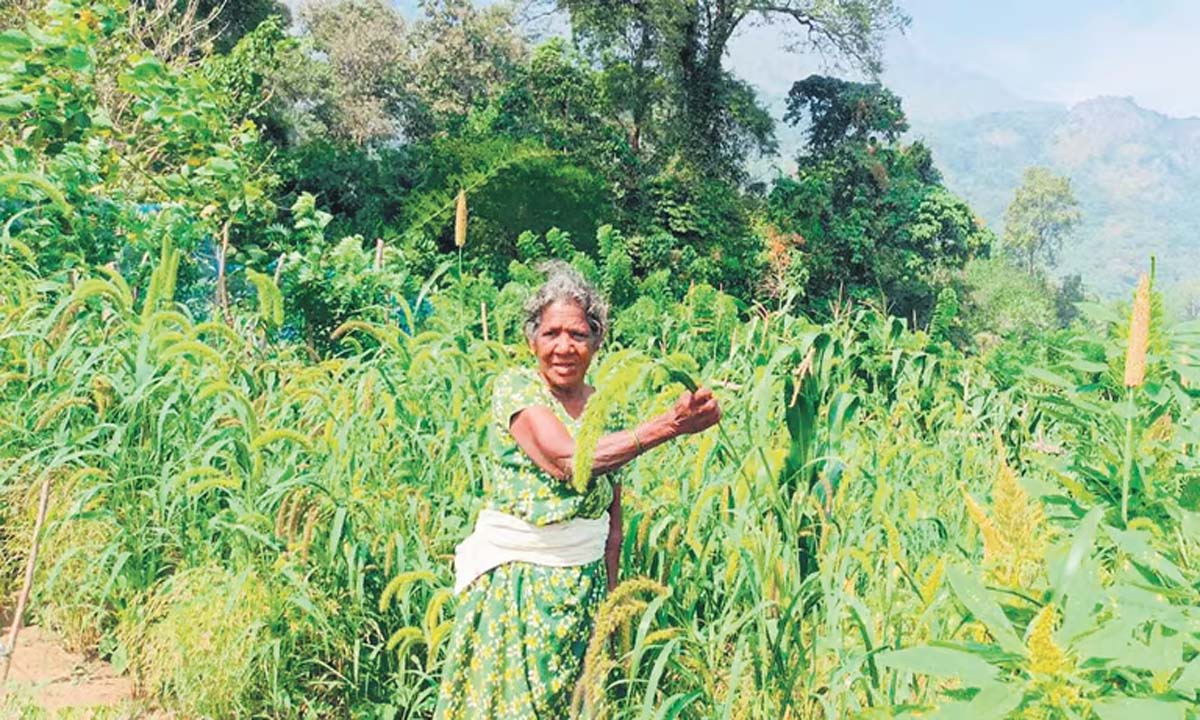Tribal farmers persevere as millet cultivation booms in Attappadi

PALAKAD : The past seven years have been productive for the government’s Millet Village scheme.
Mooted in 2013 at the height of infant deaths in tribal regions – 31 deaths were reported that year – the programme aimed at ensuring that tribal residents eat nutritious food that they grew.
Officials said the joint initiative of the agriculture and scheduled tribes development departments gathered steam in 2017. And in seven years, millet cultivation in Attappadi under the project grew from 150 acres in 40 tribal settlements in 2017 to 950 acres in the first season now. Around 1,220 tribal farmers from 97 settlements are cultivating millets at Attappadi now.
The tribals prefer growing finger millets (ragi), great millets (sorghum, cholam) and little millets (chama) as well as foxtail millets (thina), kodo millets (varagu), barnyard millets (kuthiravali), kambu and mani cholam.
“I am part of a group of 60 tribals who are cultivating millets on 30 acres at Kollakadavu. We began millet cultivation in 2018 following awareness sessions by officials. Farming has been systematic since,” said Selvan, 36, from Kollakadavu tribal settlement in Attappadi. He said there were just 12 members in the group initially.
“This season, the number grew to 60. We cultivate in both seasons,” he said, adding that submitting their harvest at the millet office nets them `60 per kg. Individual farmers like Manikandan of the Varagampadi tribal settlement are also into millet cultivation. Manikandan owns six acres of land where he cultivates ‘karanellu’ (paddy which requires less water) as well as ragi, chama, kambu and thina.
“Though the subsidy received this year was less, I could meet tilling costs. I cultivate ragi organically on one acre which yields me 600kg in one season. We sell it at the office for Rs 60 per kg. I set aside some of the produce for myself and sell the excess,” Manikandan said. T K Ranjith, agriculture officer of Millet Village scheme in Attappadi, said there are plans to expand millet cultivation to 1,200 hectares in the second season. “Farmers’ applications are being received,” he said.
Rangaswami, the chairman of Attappadi Tribal Farmers Association for Millets (ATFAM) which has 164 farmers as members, said they buy organically-cultivated millets for Rs 60 per kg.
“There is good demand. Millets require little rain. We use cow dung and goat droppings as manure. At present, ATFAM markets around 36 value-added products, including ragi puttupodi, ragi dosa mix, chama uppumavu mix and panivaragu rice,” he said.
B S Minimol, agricultural assistant, Millet Village, said around 1,220 farmers are cultivating millets in three panchayats of Attappadi.
“A subsidy of Rs 12,000 per hectare is provided for millets and pulses, and Rs 15,000 per hectare for oil seeds and vegetables. Crops of 926 millet farmers in 40 tribal settlements across 741.97 hectares have received organic certification from Indocert. Insurance premium is collected at krishi bhavans at Rs 1 per cent,” Minimol said. She said the produce is dispatched via couriers and post to customers and also sold at their outlet and during exhibitions.
However, farmers said subsidies for pulses, oil seeds and vegetables have been withdrawn owing to financial crunch.
Secondary processing unit
Ranjith said a secondary millet processing unit has been proposed on five acres at the goat farm in Agali to make value-added products.
“There is a primary processing unit on a four-cent plot at Cheerakadavu where grains are processed as rice. Since expansion is not possible there, a separate secondary unit has been planned,” Ranjith said. The plan is to produce ‘ready to eat’ and ‘ready to cook’ items. These include biscuits, cookies, noodles and pasta.
Reaping the harvest
Millet Village is funded under the Rebuild Kerala Initiative at I7.99 crore. Tribal farmers are imparted training under scheme
Millet cultivation in Attappadi helped Kerala secure the ‘best millet promotion state’ tag by the Indian Institute of Millet Research during International Year of the Millets in 2023
















